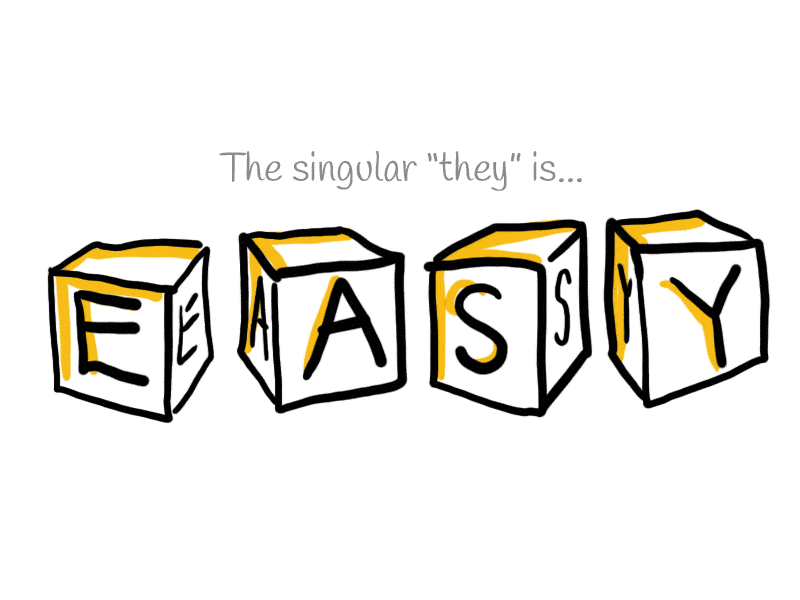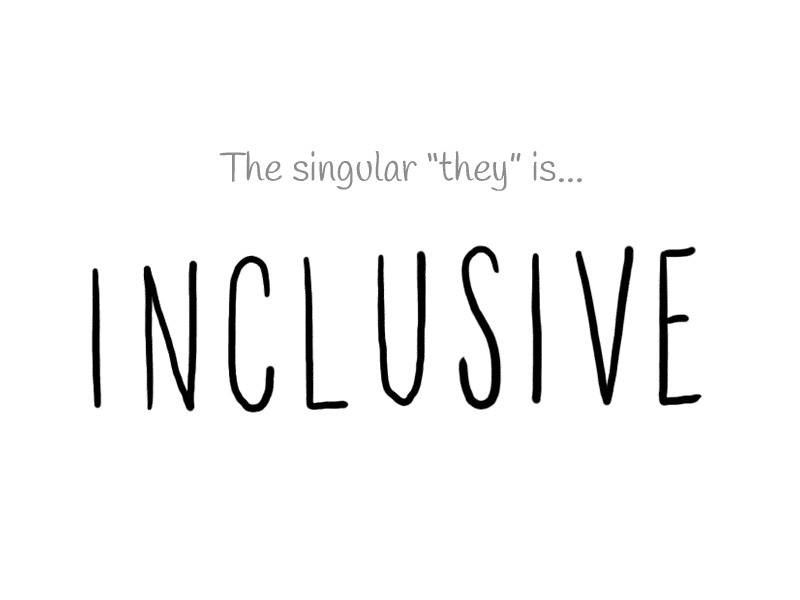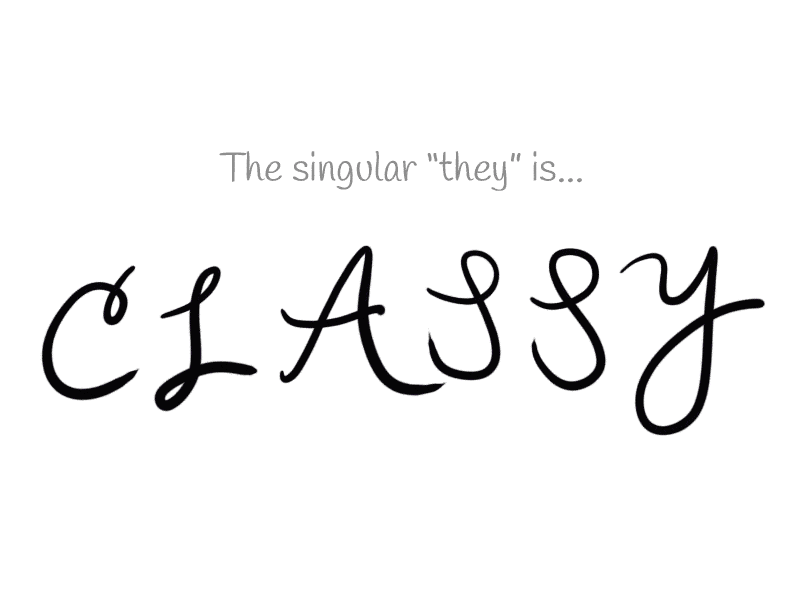
If you’re trying to make an example of a hypothetical, general person,
“they” makes them as general as one can imagine.1
Consider: “If someone hugged me, I’d hug her back” and
“If someone hugged me, I’d hug them back.”2
Imma hug everyone back — there’s no question of that —
so for hugging leeway, I heart “they.”

Writing with non-gender-neutral pronouns is a serious pain.
Some prefer the Frankenword “s/he,” while others rack their brain.3
Some stick with a particular pronoun for one paragraph or chapter,
then swap out the one they’re using;
others alternate “he” and “she” by sentence, or use a plural adapter,4
but that all sounds confusing.5

“They” doesn’t assume a person’s gender,6
and it doesn’t assume there are only two.7
It’s inclusive of people of all different genders
(including me, everyone else, and you).
It’s a metaphorical blanket that can cover the human population
(which, non-metaphorically, would be a cuddle celebration).

The English language’s greats have used it throughout history —
for the past 700 years, since at least the 14th Century.
Some people object to “they” and cite grammar as their plea,
but it was classically used by Chaucer, Shakespeare, Austen, and Thackeray,8
so who would I be to say it’s not good enough for me?
- As soon as you refer to a person with a pronoun, you're implying thousands of unsaid things (whether you mean to or not), particularly if the assumed default is “he,” and only “she” marks a person’s identity. “They” changes the assumed default from being “he” (the old standard) to being truly neutral. Read this classic essay by Deborah Tannen for a related primer on marked and unmarked identities. ↩
- Or consider this great example from Mental Floss: “What do you do when you run into your friend on their birthday? You wish them a happy birthday, of course!” ↩
- After some brain racking, the Washington Post — as an example of a growing number of publications — has officially allowed for the singular they in their style guide. ↩
- APA and other style guides recommend restructuring sentences into plurals to make them more inclusive, and rants like this argue that easy isn’t always better. The author writes well, but I still disagree with them. ↩
- I’ve edited books where I had to scribble down the pronoun for that chapter in the headers of every page to make sure we didn’t mix it up. ↩
- The exception here, I’ve heard argued, is when people use “they” as their pronoun, which is a slight misconception. “They” doesn’t denote a particular gender identity, as folks of many gender identities use “they” as their pronoun. Further, beyond “they,” there are lots more gender neutral pronouns than just "they" that folks use to represent non-binary or queer genders. ↩
- Confused by the “more than two genders” idea? Read this TIME article as a primer. ↩
- And more! These were just the number that fit in this line and rhymed. Here’s another sampling of classic Singular They advocates. ↩
- If you’re wondering which style guides are opposed to Singular They, right now the simplest answer is most. APA, MLA, Chicago, AP, are in that opposition, but there are tons of individual publications who have revolted, two famous ones are Washington Post and Baltimore Sun. But that's changing.
HEART IT: